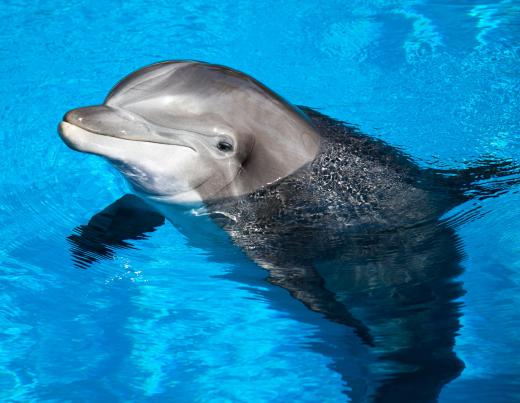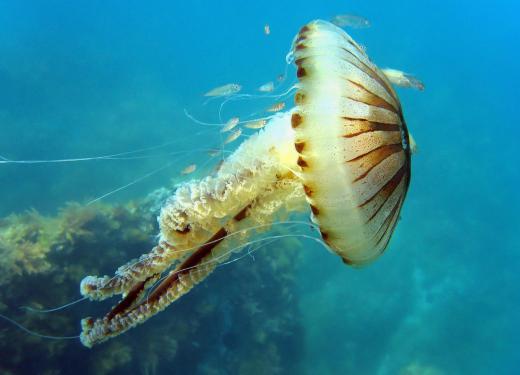Which Animals Live on the Sea Floor?
 Michael Anissimov
Michael Anissimov
Contrary to popular belief, most of the sea floor, known as the "open ocean", is not really a habitat for animals, just a place they pass by on the way to somewhere else. In most of the world, the ocean floor is very deep, averaging 3,790 meters (12,430 ft) in depth. Nearly half of the world's sea floors are over 3,000 meters (9,800 ft) deep. Altogether, the deep sea floor makes up about 71% of the world's oceans, with shallow waters, such as continental shelves, making up 29%.
The animal life on the sea floor is very different depending on whether we are talking about the continental shelf or the deep ocean. On the continental shelves is where the greatest biodiversity can be found. Many plants and animals live here: kelp forests, huge amounts of algae, sharks, fish, crustaceans, brachiopods, bivalves, sponges, cnidarians (jellyfish and relatives), echinoderms (starfish, sea urchin, and relatives), cetaceans (whales, dolphins, porpoises), and many more. Out of 38 animal phyla, all except for one — the velvet worms — have a marine version. This is why the field of marine biology is so huge.

Although the continental shelves are technically the "sea floor," sometimes when the word is used, it refers specifically to the deep sea. The deep sea is mostly devoid of life, as the aphotic (without light) zone of the ocean begins at a depth of 0.9 km (15,000 feet) and continues all the way to the bottom. Because regions without light cannot support photosynthesizing plants or bacteria, the ecosystem in the aphotic zone depends mainly on organic detritus which falls from above. Many animals found in the aphotic zone are capable of producing their own light, called bioluminescence.

All the way at the bottom of the deep sea — an area that mankind has explored less than 1% of — the main ecosystems build around seamounts, where animals tend to congregate, and rift valleys, where geological activity can provide warmth and chemicals to support a mini-ecosystem. Two famous sea floor ecosystems are those built around hydrothermal vents and cold seeps. Neither of these ecosystems depend on the sun for energy. The producers of these ecosystems are chemotrophic bacteria, which oxidize inorganic chemicals for energy.

The most abundant animal on the sea floor are likely nematodes, also known as flatworms. These average about 1 mm in size, and can be found in the deepest ocean trenches, where the pressure is over a thousand atmospheres. Echinoderms (sea stars and relatives) can also be found in the deep ocean, as well as fish such as sole and flounder. Shrimp were reportedly present at the bottom of the Marianas Trench, the deepest oceanic trench on the planet. A bizarre creature to the found on the ocean floor is the giant isopod, which has an appearance similar to a wood louse, but may be a foot in size.
AS FEATURED ON:
AS FEATURED ON:














Discussion Comments
do plankton live on the ocean floor or just float around?
I see you have a picture of a frog on your page: Which animals live on the sea floor?
Do frogs live in the sea? Our marine group is trying to find out the answer to that question.
Post your comments